It was back-breaking lifting brick after brick carrying them towards the inside of the school. For about an hour we lifted 20 pound cement bricks and carried them into the insides of the 3 foot high walls of the school we were building. We were on a volunteer trip that morning to build the library and computer lab for a small school outside of Accra. The objections I have to the short-term mission trip mentality aside, it was an interesting way to begin the Passover day. We sweated in the hot sun, plastered mortar on the walls of the school, and lifted bricks onto the walls. Although we completely very little and the masons had to do much of the work, it was an ironic experience to be doing hard labor on the day before the passover seder. Although it was for a very different purpose and we surely won't building Pithom and Raamses, it was still a connecting experience to my Jewish history.
We returned to campus at around 2:00 and it was time to prepare for the seder. The weekend before Naomi and I had bought most of the ingredients including South African sweet wine, plates, forks, cups, etc. The Tuesday before the seder I had traveled all over America House getting ingredients to make the mail meal: Yams and Tomato Stew. That afternoon, me and Dave cut tomatoes and onions while our host sister prepared the yams and our host Mom combined the ingredients into a delicious stew. While we prepared the meal, Naomi and Abby were active on campus preparing the seder room. The seder took place in the 3rd floor TV room of the International Students Hostel, where the TV was broken so we didn't have to compete with the Liverpool-Chelsea Champions League game that was going on at the same time. Our seder table was two white tables put together with a white table cloth and comfortable chouches surrounding it. We had set up about 20 settings. On the table were our plastic cups of salt water, Elijah's cup (which was composed of the top-half of a water bottle wrapped in Kente cloth), a plate of Spinach (our green vegetable since Parsley was not available), Shitaw (a spicy Ghanaian spice that we used because we had no Horse Radish or Maror). Our seder plate used spinach, a raw egg, Shitaw, very delicious Charoset, and a smelly chicken bone that I saved from my dinner on that previous Sunday that we had to keep in it's own plastic bag because it smelled awful.
The seder was a cross-cultural sharing experience. We had about 20 people there including Esther and her parents who had come to Ghana for about a week. We had around 10 Jews total and the rest of the people were interested people from our program who wanted to experience a Jewish seder. The experience of leading a seder, for myself, was very unique. We began by explaining the items on the seder plate, dipped the very bitter spinach in the salt water to symbolize the tears of the Jewish slaves in Egypt (the spinach was bitter because it had accidentally frozen in the fridge and defrosted), retold the story of the Exodus through the children's Hagada as we passed it around the table. We joined in rousing songs of Dayenu which Naomi as part of her family tradition lead in Baptist retorhic and we all sang the chorus together. We ate our Matzah that Abby and I had amazingly managed to get through a Chabad group that was conducting seders with some Israeli companies in Accra. We ate our Matzah and Charoset sandwiches which was a favorite item for most people in the seder-the recipe I copied off the internet and the sweet wine we had got worked out excellent. We drank our cup of wine, four sips rather than cups because we didn't have enough wine. It was unique to reflect on the fact that this seder was occuring in the one of the slave capitals of Africa. That the history we experienced was not distinct just to Jews. Conducting the seder barely 2 hours from Elmina Castle, a huge hub of the Trans-Atlantic slave trade was a unique experience. Then came time for the meal, a very traditional Ghanaian dish that was a huge hit. After the meal we sang Hag-Gadya and Who Knows One in English together. Both songs were enjoyed by all, especially those who weren't Jewish. Hag-Gadya tells the story of the awesomeness of God through a later of one item destroys another, all of which you are meant to say in one breath. The song of Who Knows One recounts each number one to thirteen and what's important in Jewish history about each number, all of which you are meant to recite in a single breath at the end. Two of my non-Jewish friends turned to me and Naomi, my co-leader, and said, "This was probably one of my favorite nights in Ghana".
Conducting the seder is an empowering experience, having a seder in Ghana is an insighful experience, and sharing the cultural of Judaism with you non-Jewish friends is priceless.
Best,
Ben
Saturday, April 11, 2009
Subscribe to:
Post Comments (Atom)






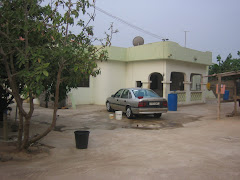
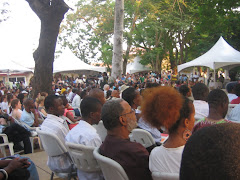
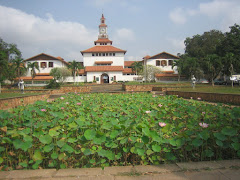
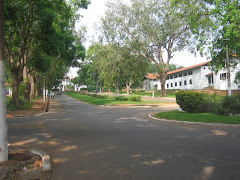
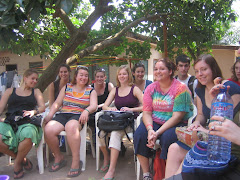
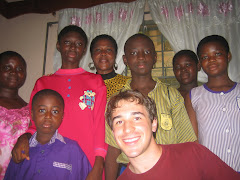
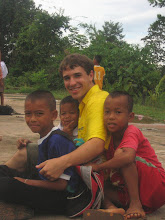
No comments:
Post a Comment